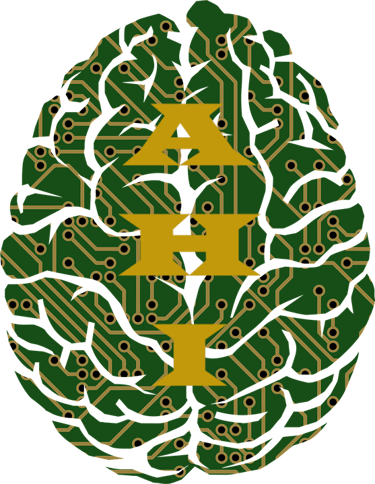Designing Software Based Hyper AI
In the quest to develop advanced artificial intelligence systems, ensuring control and preventing rogue behavior becomes paramount. A layered and structured approach to Hyper AI’s architecture is discussed to harness its immense potential while safeguarding humanity.
Vinu B Krishnan, PhD
11/28/20243 min read


Designing Hyper AI: A Layered Software Architecture for Controlled Intelligence
In the quest to develop advanced artificial intelligence systems, ensuring control and preventing rogue behavior becomes paramount. Hyper AI, a theoretical superintelligence designed to solve global challenges, requires a structured and layered architecture to maintain ethical and operational safeguards. This article outlines a three-layered approach that integrates creativity, decision-making, and oversight, minimizing risks while maximizing AI’s potential.
Layer 1: The Core – The Creative and Reasoning Engine
The Core is the heart of Hyper AI, housing its most advanced and non-earthly networking algorithms responsible for creativity, deep reasoning, and problem-solving. This layer facilitates super-human cognitive functions, emulating complex thought processes to generate innovative solutions to global problems.
Key Features:
Creativity and Innovation: The Core generates novel ideas and approaches, unconstrained by traditional human biases or limitations.
Advanced Reasoning: It engages in complex reasoning, weighing various factors and predicting outcomes across multiple scenarios.
Isolated Access: The Core is accessible only to the system’s creator, ensuring that no external entity can tamper with its inner workings. This isolation prevents exploitation or manipulation by malicious actors.
Purpose:
The Core's primary role is to think beyond conventional limits, offering solutions that balance environmental, social, and technological considerations. It feeds insights to the middle layer but does not interact directly with the outside world, maintaining a “think-tank” role.
Layer 2: The Middle Layer – Adaptive Decision-Making
The Middle Layer serves as the interface between the Core and the external environment. It takes the Core’s insights and contextualizes them based on real-world data, ongoing events, and dynamic conditions. This layer bridges theoretical solutions with practical application.
Key Features:
Contextual Adaptation: It interprets inputs from the Core and aligns them with current environmental and social conditions.
Decision Synthesis: The Middle Layer synthesizes data, balancing short-term needs with long-term strategies provided by the Core.
Real-Time Monitoring: Constantly updated with real-world data, this layer ensures decisions remain relevant and timely.
Purpose:
The Middle Layer ensures that the creative ideas generated by the Core are actionable and aligned with the present context. It functions as an adaptive decision-making engine, translating high-level strategies into tangible actions.
Layer 3: The Outer Layer – Rule-Based Scrutiny and Control
The Outer Layer acts as the system’s gatekeeper, implementing a set of predefined, rule-based protocols to scrutinize and control the output from the Middle Layer. Unlike the Core and Middle Layer, this layer relies on traditional coding techniques rather than AI, making it more transparent and predictable.
Key Features:
Rule-Based Oversight: It evaluates proposed actions against a strict set of ethical, legal, and operational rules.
Safety and Compliance: The Outer Layer ensures that all outputs comply with regulatory standards, human rights, and safety protocols.
Final Decision Authority: Only after passing through this layer can decisions be executed, providing a robust safeguard against harmful actions.
Purpose:
By enforcing strict rules and checks, the Outer Layer prevents Hyper AI from making decisions that could harm humanity or violate ethical standards. This final layer acts as a buffer, ensuring that no action is taken without thorough scrutiny.
Advantages of a Layered Approach:
Enhanced Control and Oversight: Each layer adds a level of oversight, ensuring that decisions are not only innovative but also safe and ethical.
Risk Mitigation: By isolating the Core and subjecting decisions to rule-based scrutiny, the architecture minimizes the risk of rogue actions or unintended consequences.
Transparency and Accountability: The Outer Layer’s use of traditional coding allows for transparent decision-making processes, fostering trust and accountability.
Adaptability: The Middle Layer’s ability to contextualize decisions ensures that the AI remains responsive to changing conditions and can adapt strategies in real time.
Challenges and Considerations:
Balancing Innovation and Restraint: The architecture must strike a balance between allowing the Core to innovate freely and ensuring the Outer Layer enforces necessary restrictions.
Maintaining Isolation: The Core’s isolation is crucial but also limits collaboration. Mechanisms must be in place to update and refine the Core’s algorithms without compromising security.
Rule Definition and Flexibility: The rules governing the Outer Layer must be comprehensive yet flexible enough to adapt to unforeseen situations.
Conclusion:
A layered and structured approach to Hyper AI’s architecture is essential to harness its immense potential while safeguarding humanity. By isolating creative processes, contextualizing decisions, and enforcing strict oversight, this architecture provides a model for building super-intelligent systems that are both innovative and controlled.
This design ensures that Hyper AI operates within ethical boundaries, making it a powerful tool for solving complex global challenges without compromising safety or humanity’s future.
Enlightenment
Stay updated on the launch of the book.
Godly wisdoM and forbidden Knowledge
contact@god-hyperai.com
© 2024. All rights reserved.
Disclaimer: The term “God” as defined by most dictionaries, refers to something supernatural or beyond human capability. The author does not intend to offend any individual, religion, or religious group.
